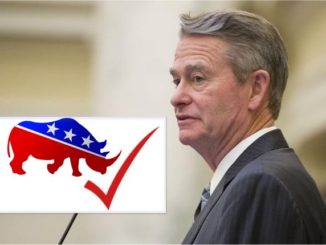As Idaho school spending grows, student performance still lags
If Gov. Otter has his way — and there is little reason to think he won’t — overall education spending will increase for the sixth consecutive fiscal year.
After growing by an average of more than six percent a year for the past five years, Otter seeks a more than seven percent increase for education over the current fiscal year 2017 budget, which is nearly $2.1 billion.
According to state Department of Education figures, since the 2012-2013 school year, current expenditures for each full-term average daily student attendance has remained constant in the $7,500 to $7,600 a year range.
(For a deep dive into school spending, visit the Idaho Department of Education’s Public School Finance page and go to Reports.)
The state now spends roughly $500 million a year more on education than it was in fiscal year 2012. Interestingly, what you won’t hear from teachers unions and other supporters of unlimited education spending is whether Idaho taxpayers are getting better student performance for that nearly half-billion dollars.
Four years ago, Gov. Otter assembled a K-12 task force, which recommended a good many things. However, a determination as to whether spending more on education meant smarter, better prepared students was not among the recommendations.
“There is no evidence of a correlation between spending and student performance,” said Fred Birnbaum, vice president of the Idaho Freedom Foundation. “You see a huge disparity in the amounts districts spend per student with no correlation to better results.”
Idaho isn’t alone. The late Andrew Coulson, in a groundbreaking 2014 study for the Cato Institute, found that since 1970, across the country, school spending has tripled in inflation-adjusted dollars. During that same period, the performance of students on grade and high school performance exams has remained flat.
“Consistent with those patterns, there has been essentially no correlation between what states have spent on education and their measured academic outcomes,” Coulson concluded. “In virtually every other field, productivity has risen over this period thanks to the adoption of countless technological advances — advances that, in many cases, would seem ideally suited to facilitating learning. And yet, surrounded by this torrent of progress, education has remained anchored to the riverbed, watching the rest of the world rush past it.”





